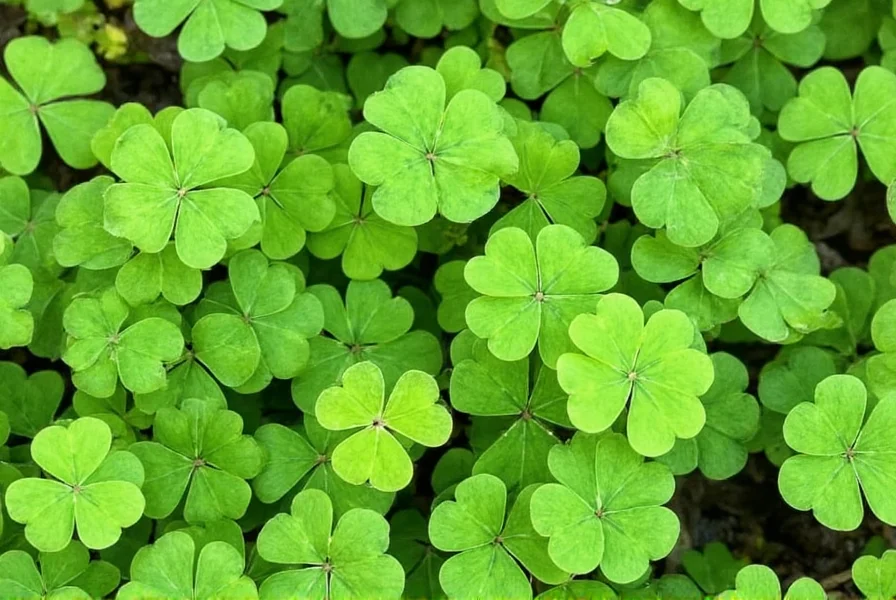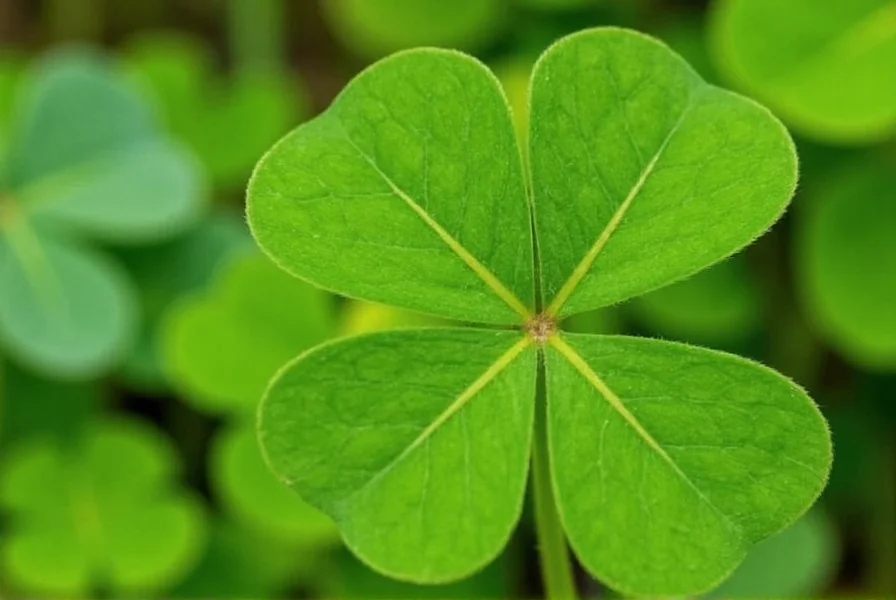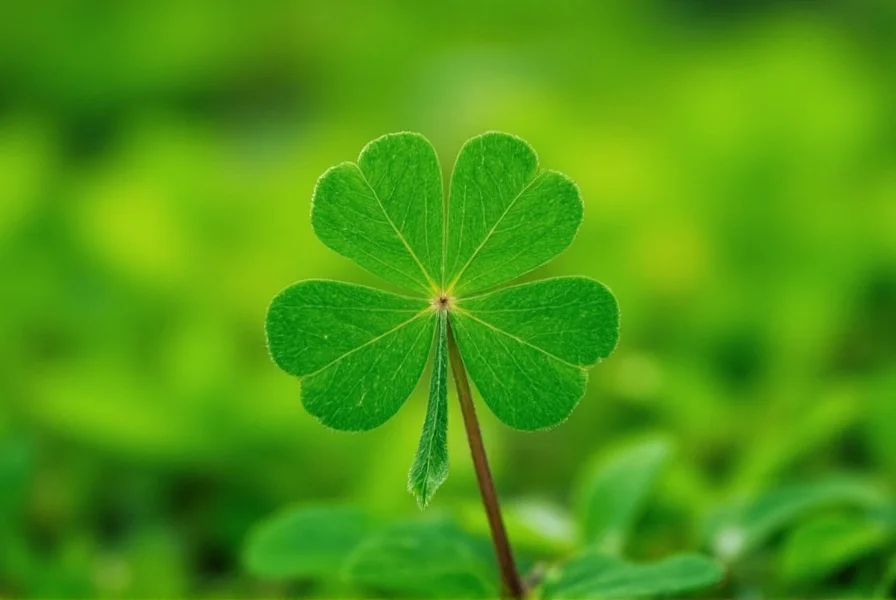Clovers represent one of nature's most recognizable and ecologically significant plant groups. With approximately 300 species worldwide, these versatile plants thrive in diverse environments from temperate grasslands to mountain meadows. The term "clover" specifically refers to plants within the Trifolium genus, though some related species in other genera are commonly called clovers due to similar appearance.
Botanical Characteristics of Clover Plants
Clover plants share several distinctive botanical features that make them easily identifiable. Their most recognizable characteristic is the trifoliate leaf structure—three leaflets arranged in a palmate pattern radiating from a central point. Each leaflet typically displays a light "V" or crescent-shaped watermark, though this varies by species. The stems of clover plants are generally slender and creeping, allowing them to form dense mats that help prevent soil erosion.
The flowers of clover species grow in compact, spherical clusters called inflorescences. These flower heads contain numerous small individual flowers that collectively create the characteristic pom-pom appearance. Flower colors range from pure white in white clover (Trifolium repens) to deep crimson in red clover (Trifolium pratense). Many clover species produce sweet nectar that attracts bees and other pollinators, making them valuable honey plants.

Common Clover Species and Their Identification
While hundreds of clover varieties exist, several species are particularly widespread and recognizable:
| Species | Scientific Name | Key Identification Features | Habitat Preferences |
|---|---|---|---|
| White Clover | Trifolium repens | Small white or pink-tinged flower heads; creeping growth habit; leaves often with crescent-shaped watermark | Meadows, lawns, pastures; tolerates mowing and foot traffic |
| Red Clover | Trifolium pratense | Bright pink to purple flower heads; upright growth; leaves with distinctive white chevron pattern | Fields, roadsides, disturbed areas; prefers well-drained soil |
| Alsike Clover | Trifolium hybridum | Pink flowers that turn brown with age; no watermark on leaves; intermediate growth habit | Moist areas, floodplains, cooler climates |
| Black Medic | Medicago lupulina | Small yellow flower heads; produces black seed pods; often mistaken for clover | Lawns, disturbed soils, urban areas |
The Four-Leaf Clover Phenomenon
The legendary four-leaf clover represents a natural genetic mutation occurring in approximately 1 in 5,000 clover plants. While the standard clover displays three leaflets (representing faith, hope, and love in traditional symbolism), the rare fourth leaflet symbolizes luck. This mutation results from a combination of genetic factors and environmental conditions.
Botanists have identified several causes for the four-leaf variation:
- Genetic mutation affecting leaf development
- Environmental stressors such as nutrient deficiencies
- Exposure to certain chemicals or pollutants
- Natural genetic variation within clover populations
Some clover varieties have been selectively bred to produce higher rates of four-leaf specimens. The world record for the most leaves on a single clover stem stands at 56 leaves, verified by Guinness World Records in 2009.
Ecological Importance of Clover Species
Clovers serve multiple critical ecological functions that benefit both natural ecosystems and agricultural systems. As legumes, they possess the remarkable ability to fix atmospheric nitrogen through symbiotic relationships with Rhizobium bacteria in their root nodules. This natural fertilization process enriches soil fertility without requiring synthetic inputs.
Key ecological benefits include:
- Nitrogen fixation that improves soil health for neighboring plants
- Prevention of soil erosion through dense root systems
- Support for pollinator populations with abundant nectar sources
- Provision of high-protein forage for livestock and wildlife
- Natural weed suppression through competitive growth
In agricultural settings, clovers function as valuable cover crops that break disease cycles, improve soil structure, and reduce the need for chemical fertilizers. Many farmers incorporate clover into crop rotation systems to maintain long-term soil productivity.
Practical Applications of Clover Plants
Beyond their ecological significance, clovers have numerous practical applications across various fields. In agriculture, white and red clover serve as important forage crops for livestock, providing high-quality nutrition while improving pasture sustainability. Beekeepers value clover-rich landscapes for producing mild, sweet clover honey.
Traditional medicinal uses of clover, particularly red clover, include treatments for respiratory conditions and skin disorders. Modern research has investigated red clover's isoflavones for potential benefits related to menopausal symptoms and cardiovascular health, though more research is needed to confirm therapeutic applications.
Gardeners increasingly incorporate clover into lawn alternatives due to its drought tolerance, low maintenance requirements, and ability to thrive without chemical fertilizers. Clover lawns stay green throughout summer with minimal watering and naturally suppress common lawn weeds.

Identifying Clover in Your Environment
Learning to identify different clover species enhances appreciation for these common plants. When examining potential clovers, focus on these key characteristics:
- Leaf structure: True clovers always display three leaflets per leaf (trifoliate)
- Flower shape: Look for the distinctive spherical flower heads
- Stem growth pattern: White clover creeps along the ground while red clover grows upright
- Leaf markings: Many species feature characteristic white patterns on the leaves
Be cautious not to confuse clovers with similar-looking plants such as wood sorrel (which has heart-shaped leaflets and yellow flowers) or black medic (which produces small yellow flowers and black seed pods). True clovers always belong to the Trifolium genus and display the characteristic trifoliate leaf pattern.
Interesting Facts About Clover Plants
Clovers feature prominently in cultural traditions and natural history:
- The shamrock, Ireland's national symbol, traditionally refers to wood sorrel but is commonly represented by white clover
- Clover honey accounts for approximately 30% of all honey produced in the United States
- Some clover species can survive temperatures as low as -40°F (-40°C)
- The word "clover" derives from Old English "cláfre," meaning "to cleave" or "to stick together"
- Clover pollen contains significantly higher protein content than many other pollen sources, making it valuable for bee nutrition
Frequently Asked Questions
What is the difference between a clover and a shamrock?
While often used interchangeably, shamrock traditionally refers to young wood sorrel (Oxalis acetosella) in Irish culture, though white clover has become the common representation. True shamrocks have heart-shaped leaflets and belong to a different plant family than clovers, which always feature three oval leaflets arranged in a trifoliate pattern.
Why do four-leaf clovers symbolize good luck?
The four-leaf clover's rarity (occurring in about 1 in 5,000 plants) contributed to its association with good fortune. Early Celtic traditions believed four-leaf clovers could help spot fairies and ward off evil spirits. Each leaf traditionally represents faith, hope, love, and luck, with the fourth leaf being the rare element that brings special fortune.
Are all clovers safe to eat?
Most common clovers (white, red, alsike) are edible in moderation, with flowers and young leaves being the most palatable parts. However, some clover species contain compounds that can cause digestive upset if consumed in large quantities. Clover should not be eaten by individuals with estrogen-sensitive conditions due to phytoestrogens in red clover. As with any wild plant, proper identification is essential before consumption.
How can I grow clover in my lawn as an alternative to grass?
To establish clover in your lawn, prepare the soil by removing existing grass and weeds. Broadcast white clover seeds at a rate of 1-2 pounds per 1,000 square feet, raking lightly to ensure seed-to-soil contact. Water regularly until established. Clover requires less mowing, watering, and fertilizing than traditional grass, though it may require reseeding every 2-3 years. Clover lawns work best in full sun to partial shade and tolerate foot traffic well.
Do clovers attract bees and other pollinators?
Yes, clovers are excellent pollinator plants that attract bees, butterflies, and other beneficial insects. The flowers produce abundant nectar and pollen, making them particularly valuable for honeybees. White clover blooms continuously throughout the growing season, providing a consistent food source. Red clover's deeper flowers particularly attract long-tongued bees like bumblebees. Clover-rich landscapes significantly support local pollinator populations.











 浙公网安备
33010002000092号
浙公网安备
33010002000092号 浙B2-20120091-4
浙B2-20120091-4